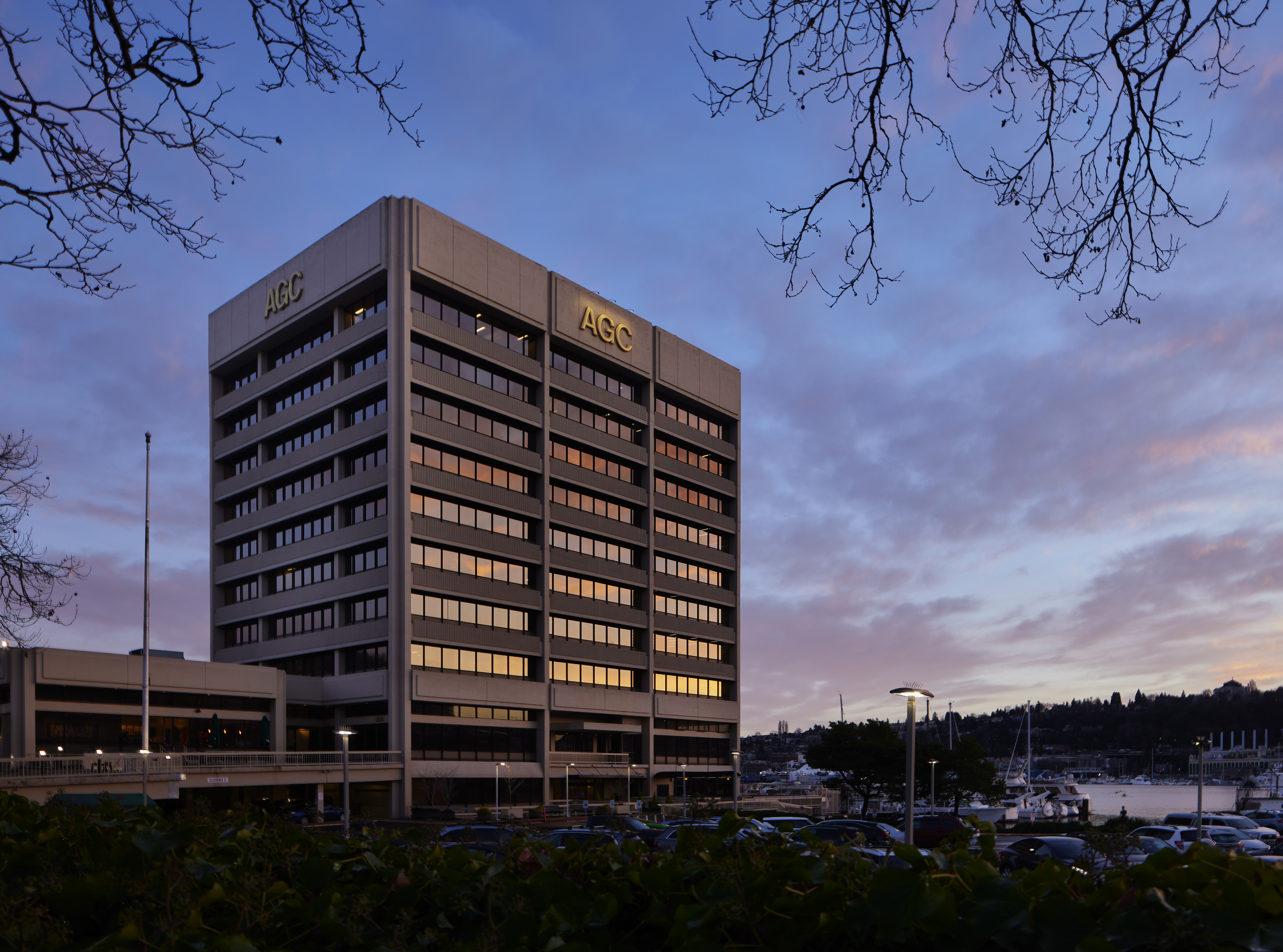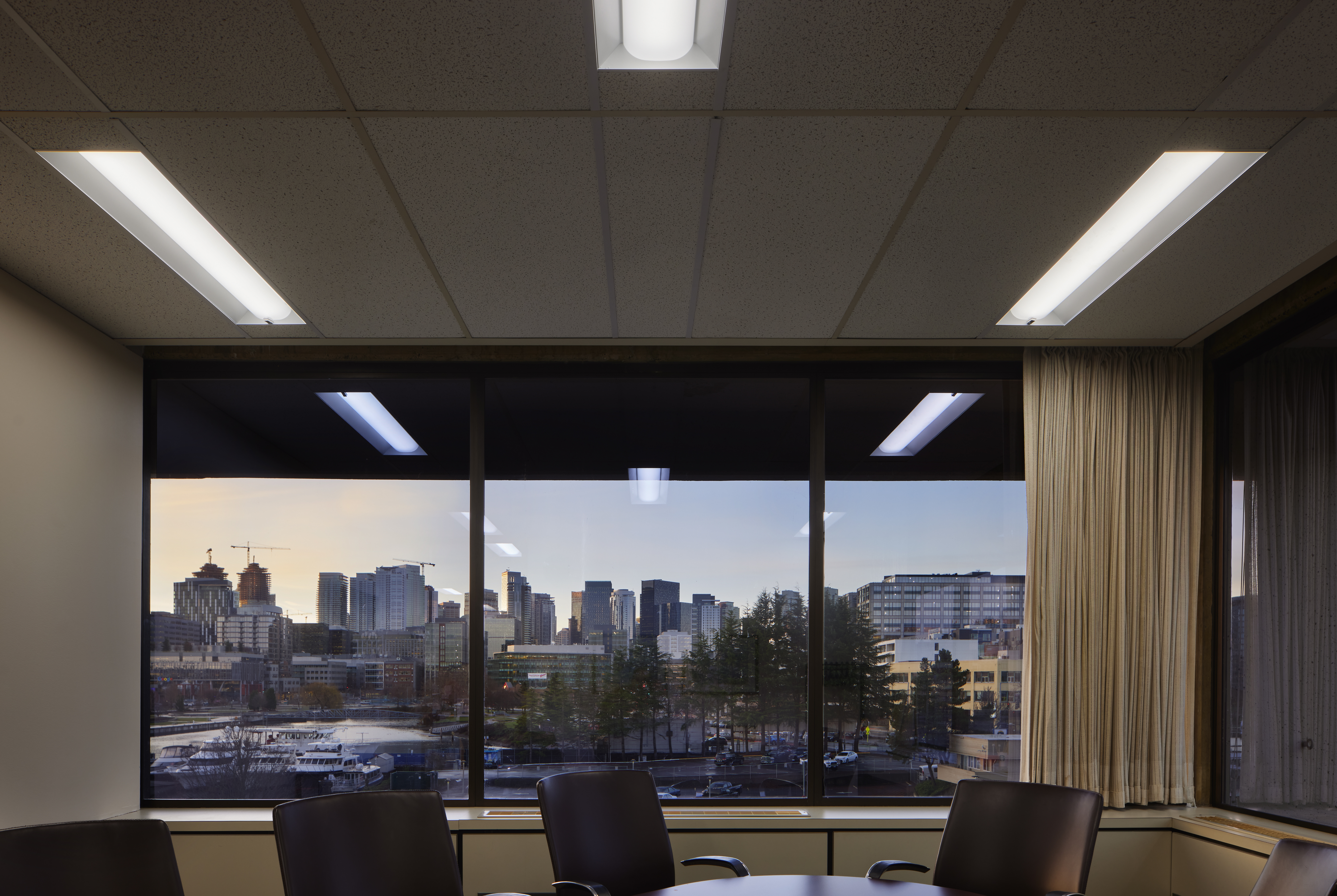 For the Associated General Contractors of Washington (AGCW), seeing is believing. It’s how they’ve helped build economical and vibrant landscapes in cities throughout the Northwest for a century.
For the Associated General Contractors of Washington (AGCW), seeing is believing. It’s how they’ve helped build economical and vibrant landscapes in cities throughout the Northwest for a century. When it came time for a lighting upgrade at the AGCW headquarters in Seattle, management wanted to experience the product before investing. Urban Energy Group created a one-room demonstration showing how Luminaire Level Lighting Controls (LLLC) combines optimal, flexible configuration and ease-of-use to meet tenant needs.
AGCW’s senior leadership recognized LLLC was the clear choice for cost savings and value. Thanks to incentives from Seattle City Light, AGCW is saving thousands in kWh and dollars, all while making their tenants happier and increasing the value of their property.
The ‘Grand Slam’ Proposal
On a marina overlooking Lake Union stands the 10-story AGCW building, filled with tenants ranging from small cafes to counselor clinics to attorney’s offices. AGCW’s Chief Facilities Engineer, Greg Manoske, knew the building needed a lighting upgrade because he was constantly replacing the AGCW building’s 2,700 old ballasted fluorescent ceiling fixtures.
Eager to make a change, AGCW put out a request for proposals to contractors. David Summers of Urban Energy Group recommended just the thing: LLLC, a wireless networked lighting solution that provides unparalleled flexibility, control, and energy savings at a cost-effective price point. A solution such as this could also offer AGCW additional benefits, including integration with a variety of business and building systems, and improved work environments.
To help offset the installation costs, Summers turned to Len Kannapell, an Energy Management Analyst at Seattle City Light, to find out what incentives his department could offer. They found that LLLC could save AGCW 479,931 kWh each year—resulting in nearly $40,000 in annual energy savings. Seattle City Light could offer a $127,269 incentive based on the energy savings, paying for a significant amount of the total project cost.
As part of his bid for a contract, Summers worked with AGCW’s Manoske on a before-and-after presentation of a conference room. The room transformed from 18 two-lamp T8 troffers with no controls to six 2x4 LLLC fixtures with high-end trim—a capability that allows the installer to set the luminaire output to achieve current recommended light levels. The building engineer, as well as some decision-makers, saw the dramatic improvement firsthand.
It was during the demonstration that Summers told AGCW’s leadership that a Seattle City Light incentive could secure them a $50 per fixture LLLC bonus, which was a significant part of the incentive. He also explained how LLLC future-proofs their investment. “ACGW could have just retrofitted their fixtures to LED, but it would lack the flexibility that they were looking for. A traditional networked lighting controls redesign would have been expensive and didn’t fit their needs. We recommended upgrading to LLLC to gain a system with maximum energy savings and future flexibility,” Summers said. “Software upgrades mean the facilities staff can change the configuration of the lights without even going up a ladder. Knowing they would continue to have tenants changing over, and knowing those changes would require floor and lighting reconfigurations, the future-proofing and the cost made LLLC a grand slam.”

The Delivery
Once Summers and Urban Energy Group won the bid, his team got to work. The pre-configured kits had a small learning curve to install, but then were fairly easy to streamline. They retrofitted the entire building, which included 100 different office spaces.
The LLLC system tapped into its daylight harvesting abilities—when sensors detect enough natural light, they automatically reduce the luminaires’ light output—capitalizing on the AGCW building’s large number of floor-to-ceiling glass windows. This individual sensor-level feature is another reason why LLLC can save up to 75% in energy usage compared to standard LED fixtures.
“LLLC’s ability to automatically dim down or turn off is key to energy savings,” said Summers. “Each LLLC fixture can individually control and adapt its own light level based on the environment, which makes the fixtures, by nature, optimized.”
 Lessons Learned
Lessons LearnedThe LLLC system installed at AGCW has the flexibility to be re-programmed to adapt to tenant occupancy much easier and more cost effectively than a traditional lighting redesign. When choosing (or specifying) an LLLC system, it is essential to understand building operation staff’s bandwidth for continually customizing the lighting at tenant request. Since it’s not uncommon for a building to have a small operations team, specifiers should identify if the customer has internal resources available to customize the system or if outside support will be needed.
For AGCW’s Manoske, that’s the one thing he’d change about his implementation of the system. “I recommend operators really understand the program interface and be realistic about your team’s bandwidth before allowing individual tenant control. I’m a one-man show at AGCW, and for this facility, optimizing energy efficiency, daylight harvesting, and space changeovers makes our LLLC system an ideal fit.”
It was a learning moment for Urban Energy Group as well. “This particular LLLC installation illustrated the importance of specifying not only the right light, but also getting to know the team who will be operating the system once things are in place,” said Summers. “To ensure a great lighting experience for both the user and the tenant, you need to balance current and future tenants’ needs with how the system will be managed.”
A Big Accomplishment
In 2022, the AGCW building partnered with Seattle City Light to enter the U.S. Department of Energy’s Integrated Lighting Campaign. The award recognizes a select number of participants for exemplary performance in their application of advanced sensors and controls in lighting and the integration of lighting with other building and business systems—and the AGCW project won. It was recognized at the 2022 Illuminating Engineering Society Annual Conference for replacing legacy lighting with cost-saving LED lighting with LLLC.
AGCW Savings from LLLC
479,931 kWH annual savings
$127,269 Seattle City Light incentive
$40,000 in annual energy savings
About AGCW
The Associated General Contractors of America of Washington (AGCW) is the leading association for the construction industry in Washington state. Headquartered in Seattle, the organization is committed to building a better climate for construction. Their building leases office spaces to a variety of businesses including counselor clinics, law firms, and real estate offices.
About LLLC
LLLC systems are comprised of a combination of sensors, network interfaces, and controllers that affect not just the light output but how lights operate throughout the day. The integrated sensors and advanced control methods provide maximum energy savings that compound over the life of the system. LLLC can save up to 75 percent in energy usage compared to standard LED fixtures.
